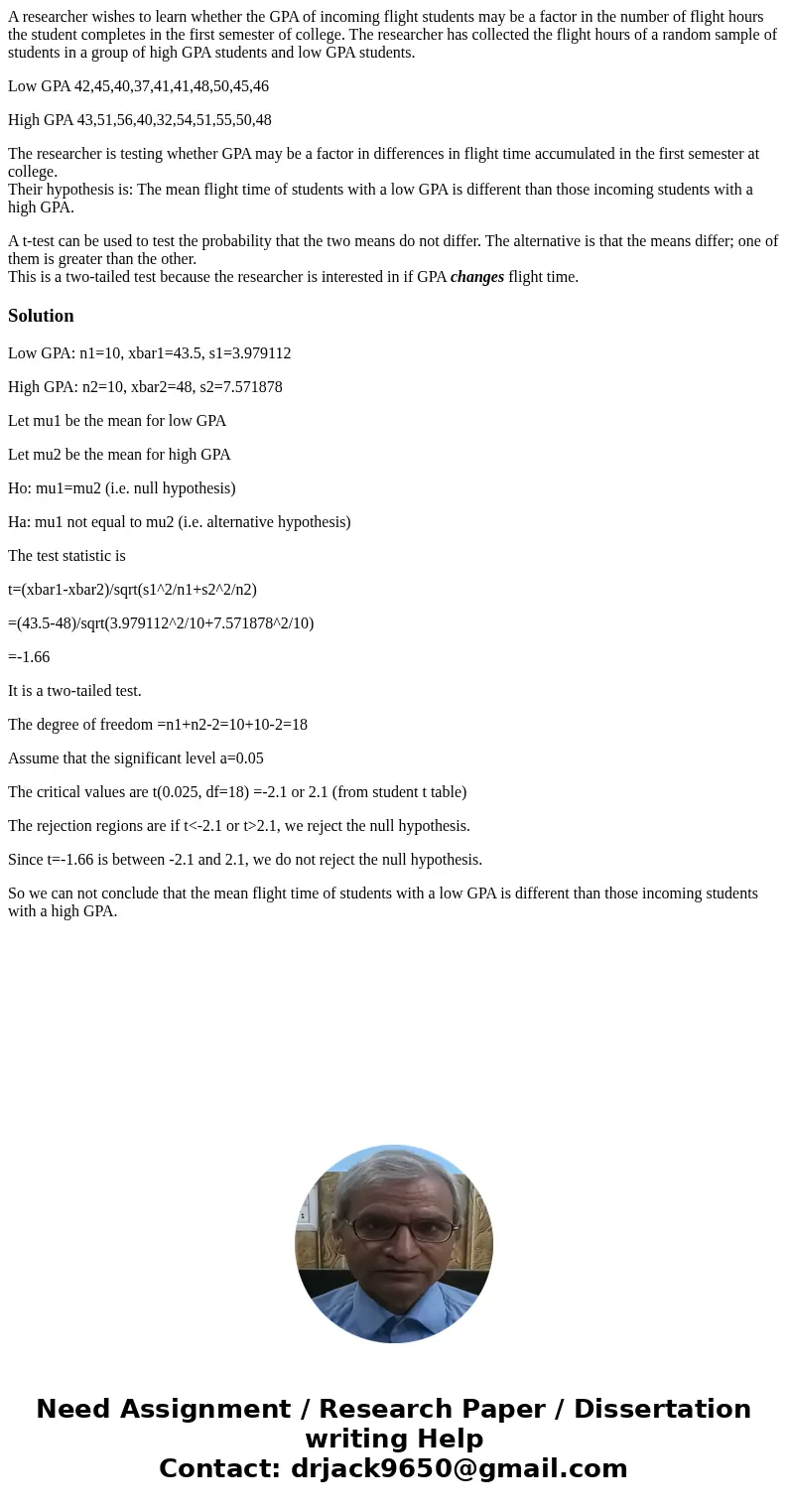A researcher wishes to learn whether the GPA of incoming fli
A researcher wishes to learn whether the GPA of incoming flight students may be a factor in the number of flight hours the student completes in the first semester of college. The researcher has collected the flight hours of a random sample of students in a group of high GPA students and low GPA students.
Low GPA 42,45,40,37,41,41,48,50,45,46
High GPA 43,51,56,40,32,54,51,55,50,48
The researcher is testing whether GPA may be a factor in differences in flight time accumulated in the first semester at college.
Their hypothesis is: The mean flight time of students with a low GPA is different than those incoming students with a high GPA.
A t-test can be used to test the probability that the two means do not differ. The alternative is that the means differ; one of them is greater than the other.
This is a two-tailed test because the researcher is interested in if GPA changes flight time.
Solution
Low GPA: n1=10, xbar1=43.5, s1=3.979112
High GPA: n2=10, xbar2=48, s2=7.571878
Let mu1 be the mean for low GPA
Let mu2 be the mean for high GPA
Ho: mu1=mu2 (i.e. null hypothesis)
Ha: mu1 not equal to mu2 (i.e. alternative hypothesis)
The test statistic is
t=(xbar1-xbar2)/sqrt(s1^2/n1+s2^2/n2)
=(43.5-48)/sqrt(3.979112^2/10+7.571878^2/10)
=-1.66
It is a two-tailed test.
The degree of freedom =n1+n2-2=10+10-2=18
Assume that the significant level a=0.05
The critical values are t(0.025, df=18) =-2.1 or 2.1 (from student t table)
The rejection regions are if t<-2.1 or t>2.1, we reject the null hypothesis.
Since t=-1.66 is between -2.1 and 2.1, we do not reject the null hypothesis.
So we can not conclude that the mean flight time of students with a low GPA is different than those incoming students with a high GPA.

 Homework Sourse
Homework Sourse